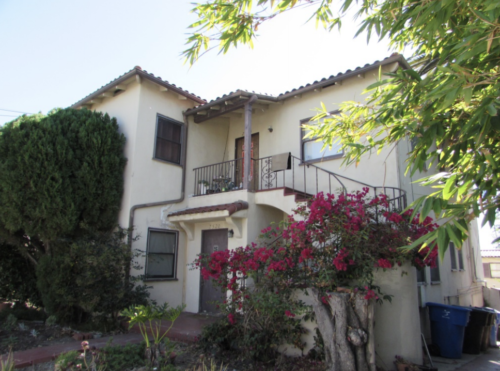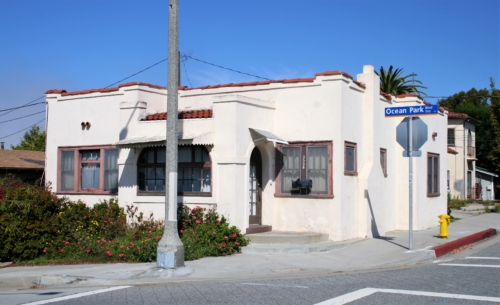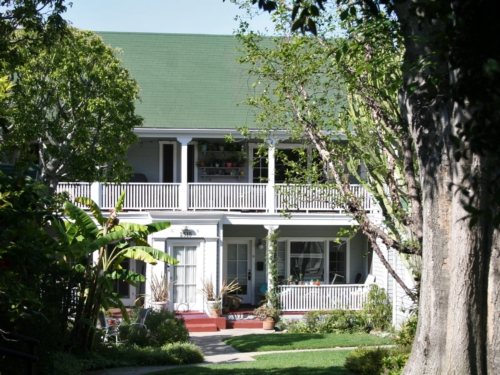Fourth Street Corner Historic District

- Known As
- Craftsman, Mission Revival, Spanish Colonial Revival, Victorian
- Architect
- –
- Built
- 1917
- Designated
- July 23, 2019
The Fourth Street Corner Historic District may be one of the smaller designated neighborhoods in Santa Monica, but each of its 14 properties is a highly intact contributor to the district, offering a contiguous display of residential Ocean Park in the early 20th century, uninterrupted by modern structures.
Designated in July 2019 as the city’s fifth historic district, the collection of homes and apartments wraps around the northwest corner of Fourth Street and Ocean Park Boulevard. The evolution of early residences of Ocean Park are represented, from a late Victorian bungalow to many variations of Craftsman, and including a distinctive variant of Mediterranean called Mission Revival which are clustered at the corner intersection. There’s a bungalow court as well as a Spanish Colonial Revival triplex, the last one built in the district in 1936. Most of the homes were constructed in a short period from 1917-1925.
The impetus for building these homes came from a 1917 roadway project, the extension of Ocean Park Boulevard, which had ended at Fourth Street, through to the ocean. Opening up this mid-block section propelled new residential construction, now protected through historic district status.
The Santa Monica Conservancy applied for districting of the neighborhood after it learned that renters at many of the properties had received Ellis Act eviction notices. This suggested the structures were at risk of possible demolition or adverse alteration by the owner unless they were afforded the protection of historic district status. The owner of the rental properties did not object to the designation.
The City Landmarks Commission failed to approve the districting application, but the Conservancy – with the support of neighborhood organizations and residents who responded to an email petition — successfully appealed the decision to the City Council, thus protecting the neighborhood’s rich heritage.
Sources:

